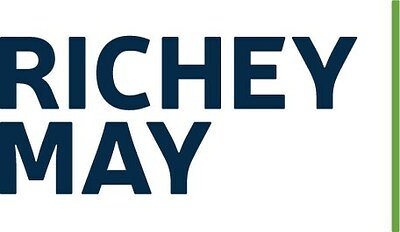
Navigating the Servicing Shift: New Guide Helps Lenders Choose In-House vs. Outsourced Models
As mortgage servicing faces disruption from tech, regulation, and market volatility, a new report from Richey May provides a framework for lenders to strategically evaluate in-house versus outsourced servicing models.
Navigating the Servicing Shift: New Guide Helps Lenders Choose In-House vs. Outsourced Models
November 12, 2025 – The mortgage servicing landscape is undergoing a dramatic transformation, driven by evolving regulatory demands, volatile market conditions, and the rapid adoption of new technologies. A new white paper from consulting firm Richey May aims to provide lenders with a practical framework for navigating this shifting terrain and making informed decisions about whether to maintain in-house servicing operations or outsource to a subservicer.
Entitled “The Servicing Decision,” the report comes at a pivotal moment. Servicers are grappling with increased scrutiny from the Consumer Financial Protection Bureau (CFPB), particularly around loss mitigation and streamlined processes, alongside rising delinquencies and the complexities of managing Mortgage Servicing Rights (MSR) portfolios in a fluctuating interest rate environment.
“The pressure is on servicers to do more with less, while simultaneously ensuring compliance and delivering a positive borrower experience,” explained one industry consultant who requested anonymity. “The decision of whether to handle servicing in-house or outsource is no longer simply a cost-benefit analysis. It’s a strategic decision that impacts risk management, customer satisfaction, and long-term profitability.”
The Evolving Servicing Landscape
The report highlights several key trends reshaping the mortgage servicing industry. Digital transformation is paramount, with AI and machine learning increasingly used to automate routine tasks, predict borrower behavior, and optimize loss mitigation strategies. Cloud-based platforms are gaining traction, offering scalability and flexibility crucial for adapting to market changes.
However, these technological advancements require significant investment and expertise. Servicers must also navigate a complex regulatory landscape. The CFPB’s proposed changes to Regulation X, aimed at streamlining mortgage servicing and reducing paperwork, will require servicers to prioritize loss mitigation and improve communication with borrowers.
“Compliance is a major driver of the in-house versus outsource debate,” said another industry source. “Maintaining control over the entire servicing process allows lenders to ensure adherence to regulatory requirements and minimize the risk of errors or violations. However, outsourcing can provide access to specialized expertise and economies of scale.”
A Framework for Decision-Making
The core of Richey May’s report is a five-point actionable framework designed to help lenders evaluate their servicing options. The framework considers factors such as organizational identity, scale, risk tolerance, and long-term strategic goals.
The report’s authors, Seth Sprague and Mignonne Davis, both veterans of the mortgage industry, emphasize the importance of a data-driven approach. Sprague, Director of Mortgage Banking Consulting Services at Richey May, has over 25 years of experience in MSR valuation and servicing operations. Davis, Director of Risk Assurance, brings nearly 20 years of expertise in compliance and internal controls.
According to Richey May, the framework helps lenders assess:
- Cost-Benefit Analysis: A detailed comparison of the costs and benefits associated with each servicing model, including personnel, technology, compliance, and potential revenue streams.
- Risk Management: An evaluation of the risks associated with each model, such as compliance violations, data breaches, and operational errors.
- Operational Efficiency: An assessment of the ability to streamline processes, automate tasks, and improve productivity.
- Customer Experience: An evaluation of the ability to deliver a positive borrower experience, including responsiveness, communication, and problem resolution.
- Strategic Alignment: An assessment of how each model aligns with the lender’s long-term strategic goals and objectives.
Lender-Specific Considerations
The report also highlights the importance of considering lender-specific factors. Smaller lenders may find it more cost-effective to outsource servicing, while larger institutions may prefer to maintain in-house operations to exert greater control and capitalize on economies of scale.
“There’s no one-size-fits-all answer,” explained one consultant. “The optimal servicing model depends on a variety of factors, including the lender’s size, complexity, risk appetite, and strategic priorities.”
The report suggests that lenders carefully consider the following questions when evaluating their options:
- What is the lender’s long-term vision for its servicing portfolio?
- What level of control does the lender require over the servicing process?
- What is the lender’s appetite for risk?
- What is the lender’s budget for technology and personnel?
- What is the lender’s ability to attract and retain skilled servicing professionals?
The Future of Servicing
As the mortgage industry continues to evolve, the decision of whether to handle servicing in-house or outsource will become increasingly complex. The rise of fintech companies, the growing demand for personalized customer experiences, and the ever-changing regulatory landscape will all contribute to this complexity.
“Servicers need to be agile and adaptable,” said one industry insider. “They need to embrace technology, prioritize compliance, and focus on delivering exceptional customer service. Those who can do that will be well-positioned to thrive in the years ahead.”
Richey May's report offers a valuable framework for lenders to navigate this evolving landscape and make informed decisions about their servicing strategies. By carefully considering the factors outlined in the report, lenders can optimize their operations, manage risk, and deliver value to their customers.
📝 This article is still being updated
Are you a relevant expert who could contribute your opinion or insights to this article? We'd love to hear from you. We will give you full credit for your contribution.
Contribute Your Expertise →